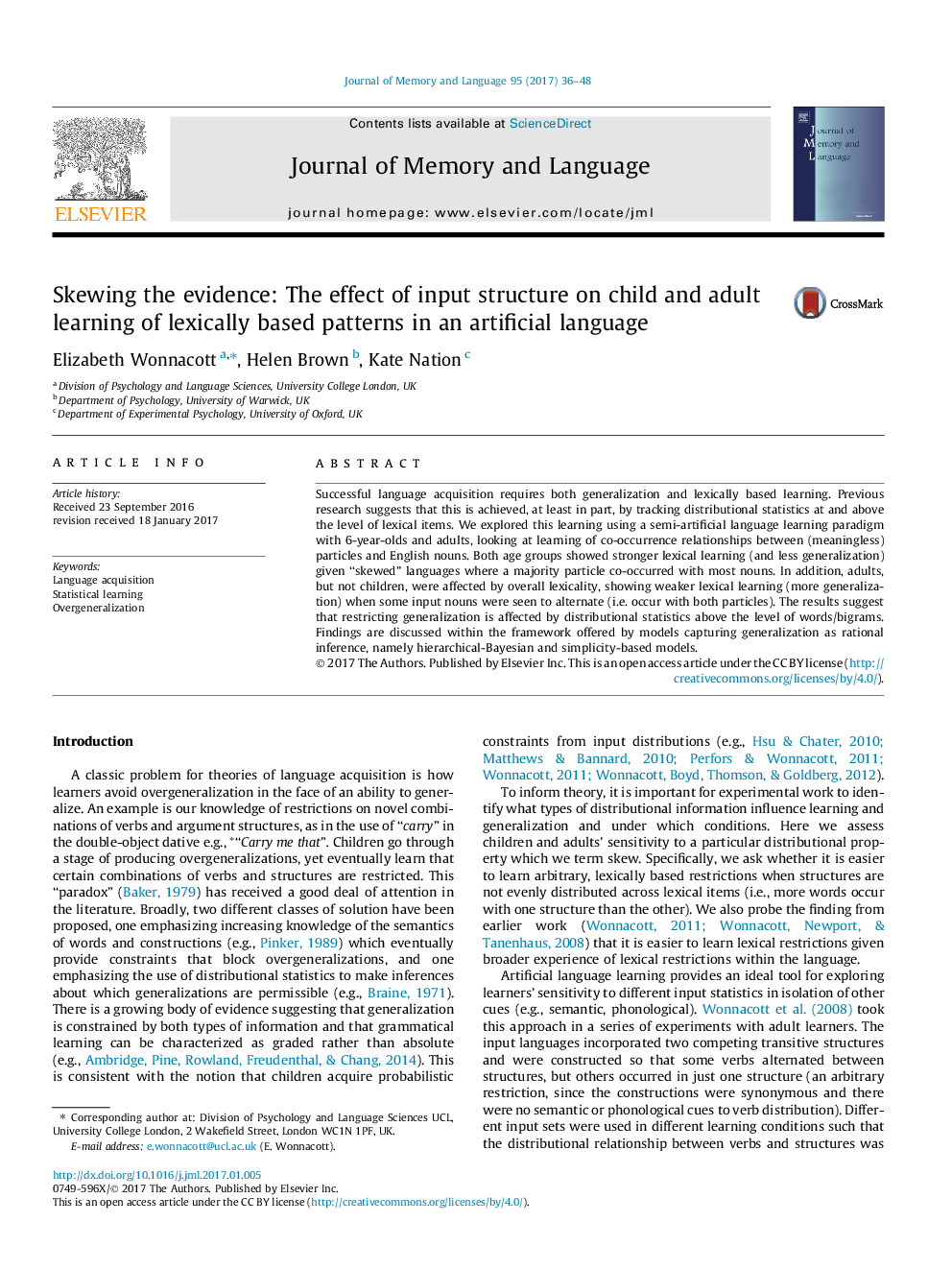| کد مقاله | کد نشریه | سال انتشار | مقاله انگلیسی | نسخه تمام متن |
|---|---|---|---|---|
| 5042491 | 1474624 | 2017 | 13 صفحه PDF | دانلود رایگان |
- Child and adult artificial language learning study exploring overgeneralization.
- We examined factors affecting learning of noun-particle co-occurrence restrictions.
- And effects of distributional statistics above the level of word/bigram frequency.
- Both ages learned better with skewed particle distribution (default and exceptions).
Successful language acquisition requires both generalization and lexically based learning. Previous research suggests that this is achieved, at least in part, by tracking distributional statistics at and above the level of lexical items. We explored this learning using a semi-artificial language learning paradigm with 6-year-olds and adults, looking at learning of co-occurrence relationships between (meaningless) particles and English nouns. Both age groups showed stronger lexical learning (and less generalization) given “skewed” languages where a majority particle co-occurred with most nouns. In addition, adults, but not children, were affected by overall lexicality, showing weaker lexical learning (more generalization) when some input nouns were seen to alternate (i.e. occur with both particles). The results suggest that restricting generalization is affected by distributional statistics above the level of words/bigrams. Findings are discussed within the framework offered by models capturing generalization as rational inference, namely hierarchical-Bayesian and simplicity-based models.
Journal: Journal of Memory and Language - Volume 95, August 2017, Pages 36-48
